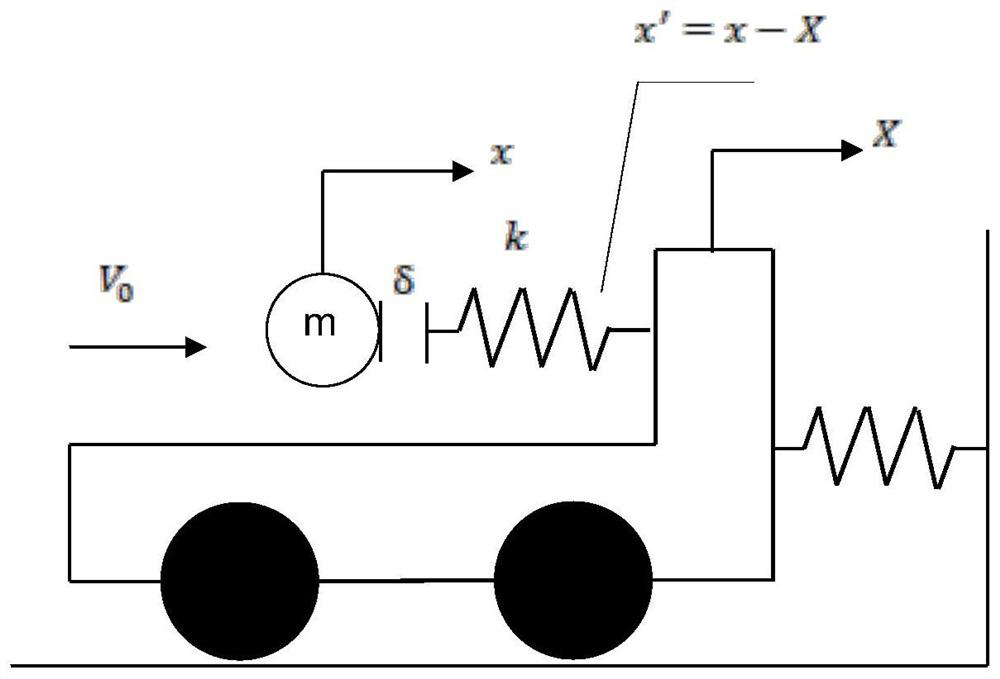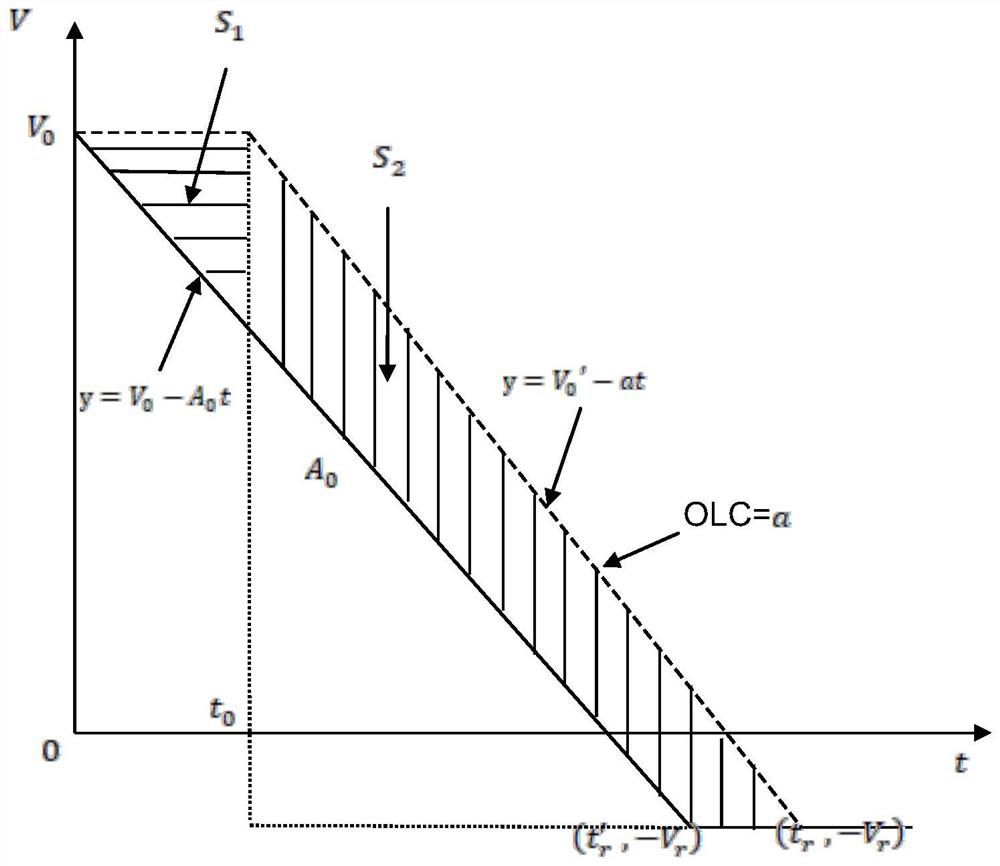Vehicle collision performance optimization method based on VPI and OLC
An optimization method and performance technology, applied in geometric CAD, special data processing applications, etc., can solve problems such as acceleration coupling, increased vehicle cost, and instability of front-end energy-absorbing structures, and achieve the effect of reducing VPI and increasing rebound speed
- Summary
- Abstract
- Description
- Claims
- Application Information
AI Technical Summary
Problems solved by technology
Method used
Image
Examples
Embodiment 1
[0155] When a vehicle weighing 2 tons is V 0 When =13.89m / s speed hits the rigid wall head-on, according to the formula (28): y=Qx, where, Q≈2, combined with the attached Figure 14 , the vehicle company has set a vehicle development goal of less than 31g OLC and less than 57g VPI. Through the first CAE simulation, it is found that the crushable space of the front cabin of the vehicle is relatively small, only 337mm, and the rebound speed of the vehicle is only 1m / s. According to the kinetic energy theorem: Calculate the average acceleration A of the vehicle 0 = 29 g.
[0156] Among them, M is the weight of the vehicle, and S is the collapse distance of the vehicle.
[0157] Will A 0 Substituting into the calculation formula of VPI can get VPI=64.84g, A 0 =29g and Vr=1m / s are substituted into the calculation formula of OLC to get OLC=30.43g. It can be found that OLC has met the target specified by the company, but VPI=64.84g>target 57g, and the body needs to be further o...
Embodiment 2
[0160] When a car with a weight of 2.5 tons is V 0 When =13.89m / s speed hits the rigid wall head-on, according to the formula (28): y=Qx, where, Q≈2, combined with the attached Figure 14 , the vehicle company has set a vehicle development target of OLC less than 35g and VPI less than 65g. Through the first CAE simulation, it is found that the crushable space of the front compartment of the vehicle is relatively small, only 291mm, and the rebound speed of the vehicle is only 2m / s. According to the kinetic energy theorem: Calculate the average acceleration A of the vehicle 0 = 33 g.
[0161] Among them, M is the weight of the vehicle, and S is the collapse distance of the vehicle.
[0162] Will A 0 Substituting into the calculation formula of VPI can get VPI=73.9g, A 0 =33g and Vr=2m / s are substituted into the calculation formula of OLC to get OLC=34.6g. It can be found that OLC has met the target specified by the company, but VPI=73.9g>target 65g, and the body needs to b...
Embodiment 3
[0165] When a car with a weight of 2.8 tons is V 0 When =13.89m / s speed hits the rigid wall head-on, according to the formula (28): y=Qx, where, Q≈2, combined with the attached Figure 14 , the vehicle company has set a vehicle development target of OLC less than 36g and VPI less than 65g. Through the first CAE simulation, it is found that the crushable space of the front compartment of the vehicle is relatively small, only 253mm, and the rebound speed of the vehicle is 3m / s. According to the kinetic energy theorem: Calculate the average acceleration A of the vehicle 0 = 37g.
[0166] Among them, M is the weight of the vehicle, and S is the collapse distance of the vehicle.
[0167] Will A 0 Substituting into the calculation formula of VPI can get VPI=81g, A 0 =37g and Vr=3m / s are substituted into the calculation formula of OLC to get OLC=38.9g. It can be found that OLC has met the target specified by the company, but VPI=81g>target 65g, and the body needs to be further ...
PUM
 Login to View More
Login to View More Abstract
Description
Claims
Application Information
 Login to View More
Login to View More - R&D
- Intellectual Property
- Life Sciences
- Materials
- Tech Scout
- Unparalleled Data Quality
- Higher Quality Content
- 60% Fewer Hallucinations
Browse by: Latest US Patents, China's latest patents, Technical Efficacy Thesaurus, Application Domain, Technology Topic, Popular Technical Reports.
© 2025 PatSnap. All rights reserved.Legal|Privacy policy|Modern Slavery Act Transparency Statement|Sitemap|About US| Contact US: help@patsnap.com



